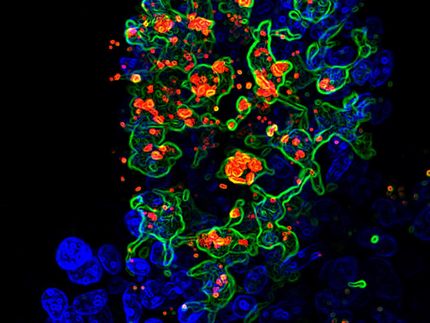Iowa State researcher studies how enzymes break down cellulose
Advertisement
Peter Reilly pointed to the framed journal covers decorating his office. Each of the six showed the swirling, twisting, complicated structure of an enzyme. Those bright and colorful illustrations are the work of his lab. And they're part of Reilly's work to understand how the structure of an enzyme influences its mechanism and its activity. In other words, he's trying to figure out "how is it that these things work," said Reilly, a professor of chemical and biological engineering and an Anson Marston Distinguished Professor of Engineering at Iowa State University.
Enzymes are proteins produced by living organisms that accelerate chemical reactions. And because enzymes break down cellulose into simple sugars that can be fermented into alcohol, they're a big part of producing ethanol from cellulose. Reilly is particularly interested in the enzymes that work on cellulose. He has a three-year, $306,000 grant from the U.S. Department of Agriculture to develop a basic understanding of how they work. Those enzymes are known as cellulases. They're commonly produced by fungi and bacteria. And they've got a very hard job. So different enzymes have developed different ways of attacking cellulose.
One enzyme Reilly has studied and illustrated - a cellobiohydrolase enzyme - has an extension that works like a little plow. It rips up one cellulose chain from a cellulose crystal and feeds it into a tunnel on the main enzyme surface so that it can be chopped up.
Reilly's students use a lot of computing power to figure out how enzymes are put together. They routinely work with CyBlue, Iowa State's supercomputer capable of 5.7 trillion calculations per second, and Lightning, an Iowa State high-performance computer capable of 1.8 trillion calculations per second. By adding to the basic understanding of enzymes, Reilly is opening doors for new and better applications of enzymes. Better enzymes, for example, could be the key to making the production of cellulosic ethanol more efficient and more economical.
There's still a lot for chemical engineers to learn about the specialized proteins. After all, Reilly said, "Nature has tried over and over to find ways to break down cellulose."
























































